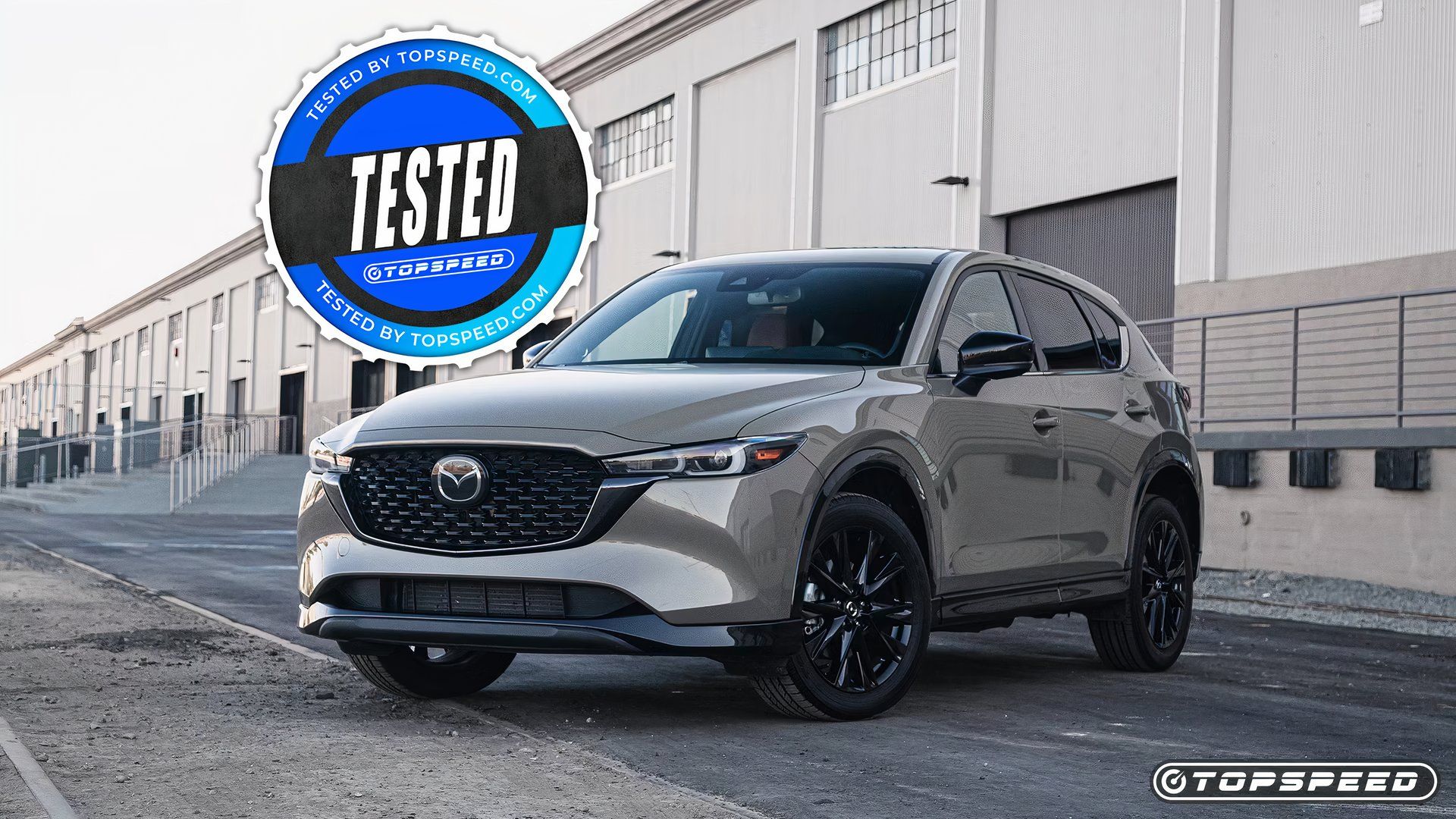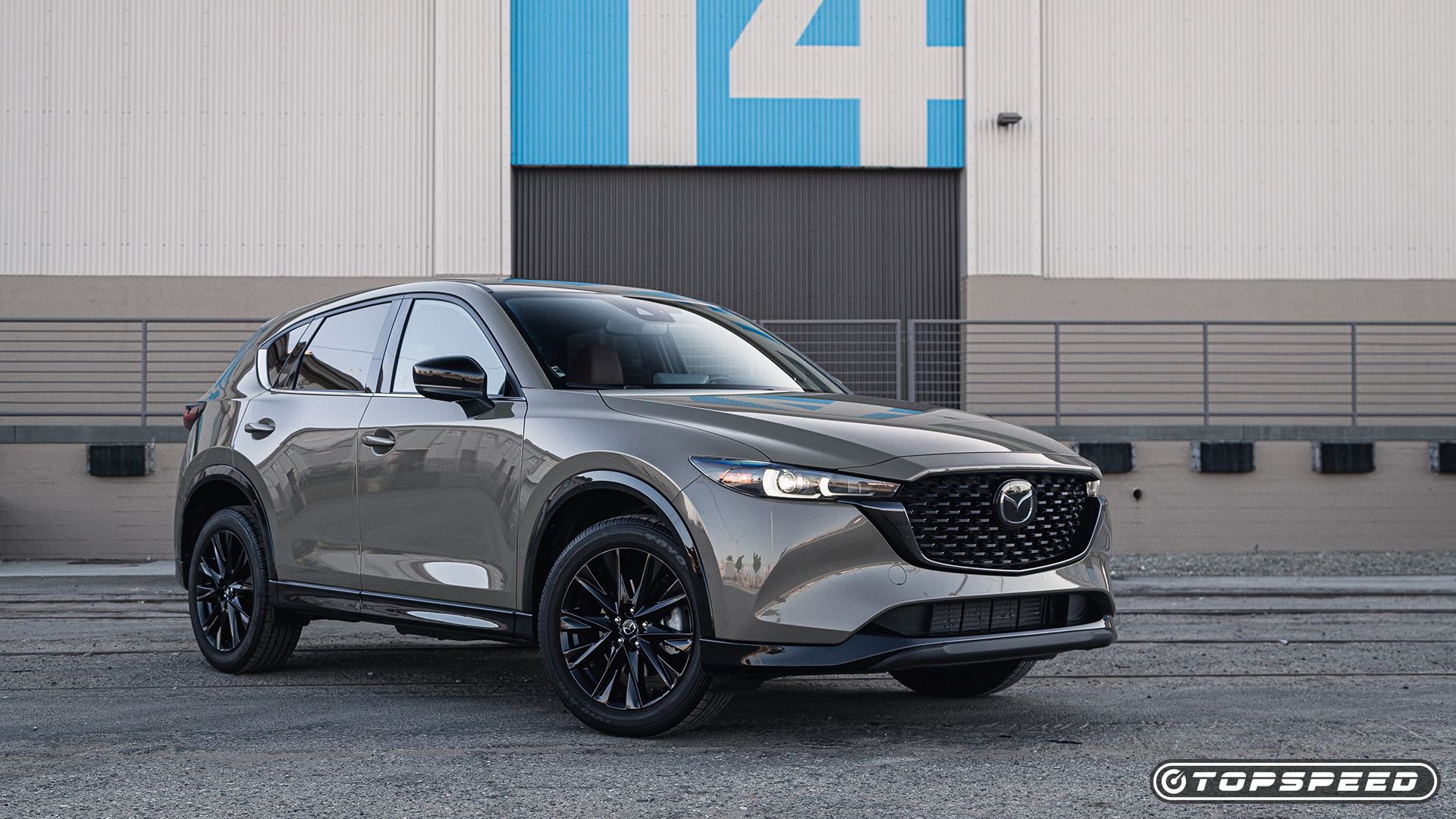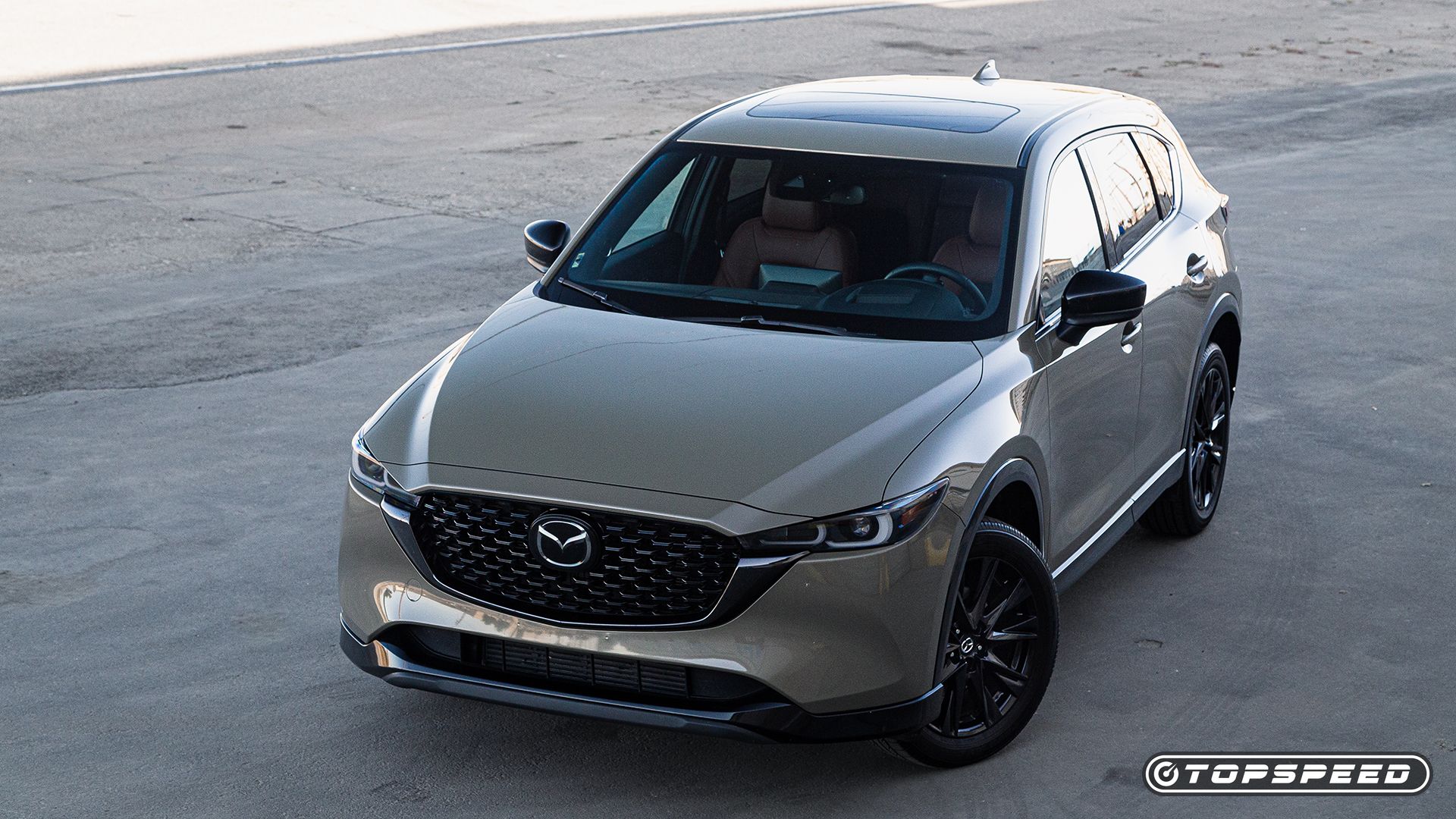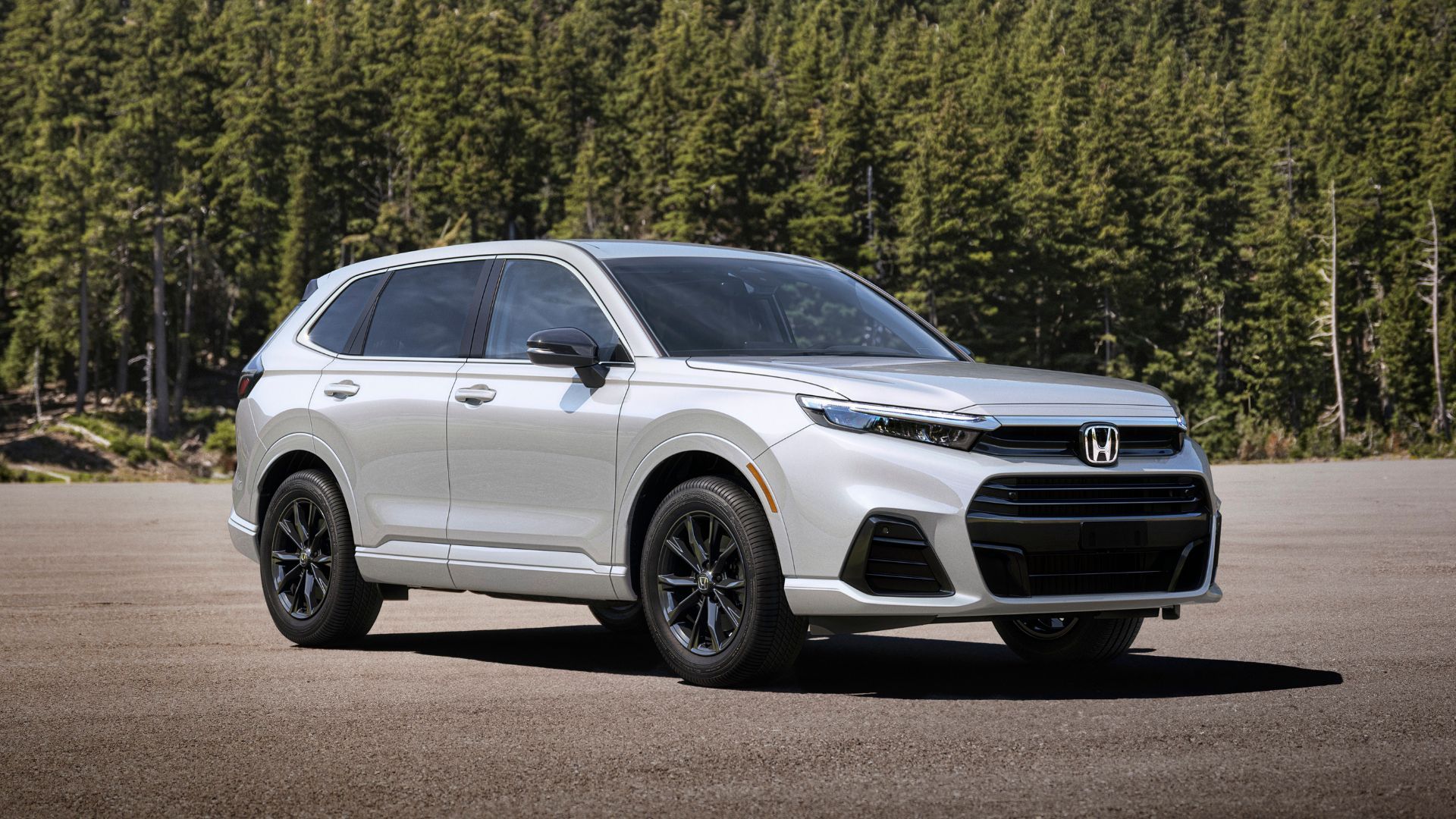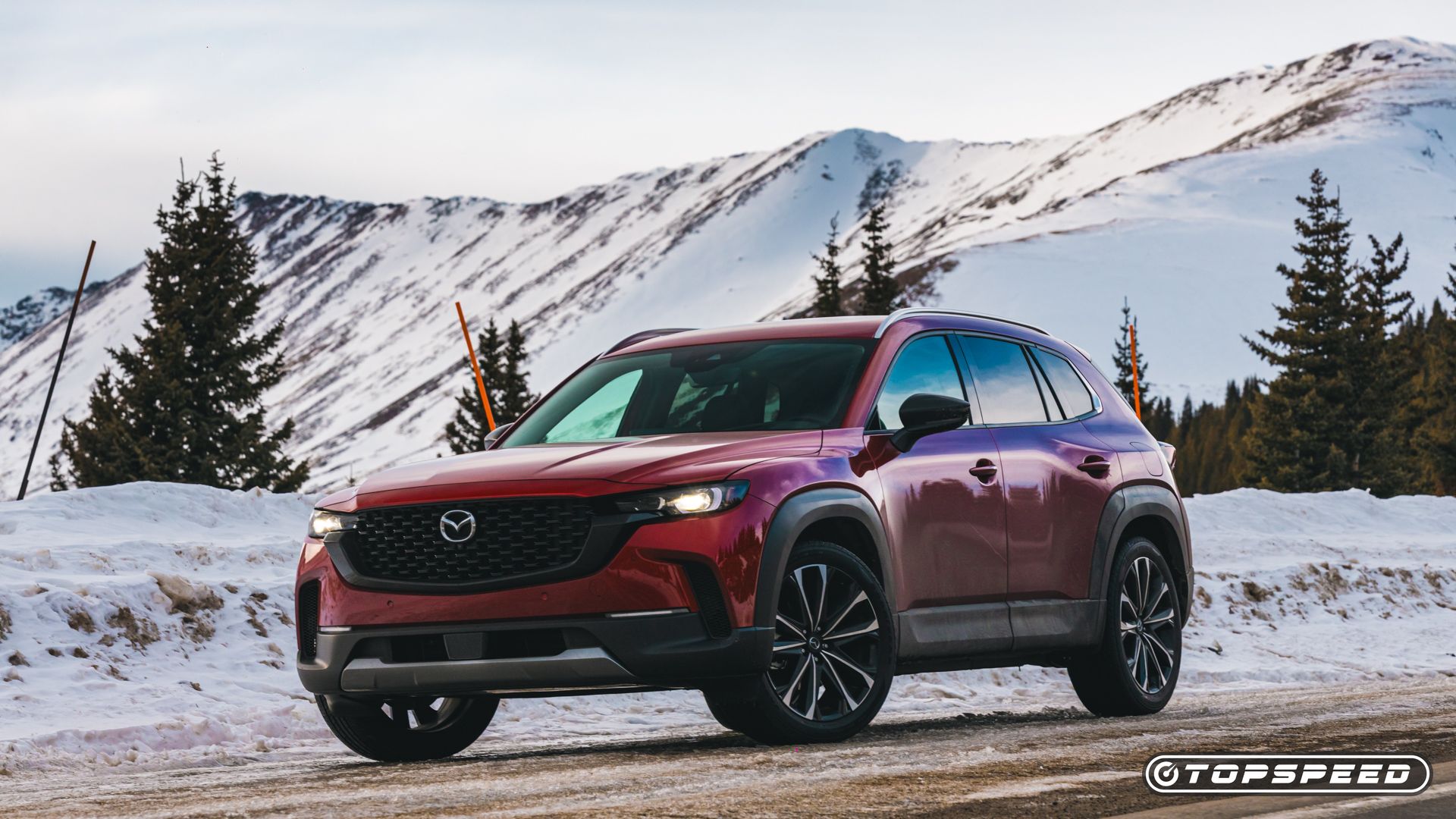Ah, the crossover. A vehicle that is at once ubiquitous and forgettable, sacrificing soul and a focus on excellence to instead do a large number of things reasonably well. The typical “jack of all trades, master of none.” Sure, they’re convenient, with lots of room for stuff and those kids you currently—or eventually—will have. But they tell the world you chose practicality over fun, and that blandness is now your jam.
Mazda, on the other hand, is a bit different. Though the brand continues to distance itself from its old zoom-zoom campaign—if I may borrow another of the brand’s taglines—its vehicles still carry the soul of a sports car. And while a big part of me wants to say the Mazda CX-5 is the cure for the common crossover, my inner Creative Director (which is my day job) would fire me for using such a hackneyed phrase.
But the CX-5 is one of the best-kept secrets in the crossover space. It’s loved by us auto-journo types as it clearly prioritizes the driver while still offering the usual benefits of a crossover. It won’t make you want to sell your sports car, but for those who need a “responsible” daily driver, Mazda’s CX-5 will at least remind you that you haven’t given up on life yet. Anyway, let’s check out one of the sportier variants of this mid-sized crossover: the 2025 Mazda CX-5 2.5 Carbon Turbo.
In order to provide you with an honest and unbiased review, the vehicle reviewed in this article was driven on a daily basis throughout the course of daily life for a period of one week. For detailed insight into testing procedures and data collection, please review our methodology policy.
2024 Mazda CX-5 Carbon 2.5 Turbo First Impressions
The Mazda CX-5 boasts a simple and elegant shape. Its Kodo design language remains handsome, with solid surfaces that reveal subtle curves as the light changes. Detail work—such as the gap found between the headlamps, hood and grille surround—suggest an attention to precision that elevates the overall look of the vehicle.
With this being the Carbon model, it gets an exclusive Zircon Sand Metallic exterior color with gloss-black accents. It’s not a bad color, but to point to the intro again, for an auto segment that is generally regarded to be the definition of bland, this fancy beige doesn’t make things feel at all exciting.
Exterior Dimensions
|
Mazda CX-5 |
|
|
Length |
180.1 Inches |
|
Width |
83.3 Inches |
|
Height |
66.3 Inches |
|
Wheelbase |
106.2 Inches |
|
Front Track |
62.8 Inches |
|
Rear Track |
62.8 Inches |
|
Curb Weight |
3871 Pounds |
Driving Impressions And Performance
When people talk about how well a vehicle drives, they generally describe how tactile it feels. It’s this direct engagement with the vehicle—including the back-and-forth conversation between driver and car—that gets car fans excited. Crossovers, typically, are designed to isolate the driver from the drive. They’re designed to help you turn your brain off as you get from Point A to Point B, and to be honest, and as someone who has to slog through peak 405 rush hour traffic, that’s not necessarily a bad thing.
The Mazda CX-5, on the other hand, was built for the driver. It does its damnedest to tell you what’s going on with all aspects of the vehicle at all times, and it expects you to put some work in. And as a car fan, it’s great. Its suspension is on the stiffer side, but the ride remains composed enough to help this crossover instill confidence in the turns. Granted, I still “technically” daily drive a slammed ‘90s Honda, so my calibrations of ride comfort may be skewed. But I can see a more mainstream consumer asking for a softer ride.
There’s a nice heft to the steering wheel, feeling more like a hydraulic system of old, with quick turn-in that mellows as the curves in the road tighten.
There’s no surprise with the powertrain here, as it’s the same 2.5-liter turbocharged four-banger Mazda has been using across its entire lineup for years now. Give it the good gas (93 octane) and it’ll give you 256 horsepower and 320 lb-ft of torque. Here in California, where I live, 91 octane is the best we get, meaning this Mazda will only give me 227 ponies and 310 pound-feet of twist.
In a world of 10-speed transmissions, Mazda’s 6-speed automatic gearbox almost seems antiquated. But it works well with the engine’s powerband, and perhaps even more importantly, it’s not a CVT. It’s smooth and it’s shift logic generally feels good. And most importantly of all, Mazda continues to set its manual shift lever the correct way. You know, pull back to upshift and push forward to downshift—the same racecar stuff that works with both physics and your body to feel intuitive. That said, maybe it’s because I’m now spending more time in electrified vehicles, but I’d love to see some more low-end shove from this powertrain. There’s a bit of a delay between the movement of my right foot and the movement of the Mazda, and I feel it could be solved with a bit of battery or an extra gear or two.
Performance Specifications
|
Engine |
2.5-liter turbocharged inline 4-cylinder |
|
Transmission |
6-speed automatic |
|
Horsepower |
256 HP @ 5000 RPM (93 octane fuel) |
|
Torque |
320 LB-FT @ 2500 RPM (93 octane fuel) |
|
Fuel Economy (CMB) |
24 MPG |
|
Towing Capacity |
2,000 pounds |
Mazda CX-5 2.5 Turbo Fuel Economy
This more old-school approach to mechanicals and driving does come with a downside: namely, fuel economy. With just six forward gears and no electric or hybrid assist, the CX-5 is on the thirstier side with an EPA-estimated 22 mpg city, 27 mpg highway and 24 mpg combined. In my own mixed driving, which was mostly spent either in stop-and-go traffic or open (but lower speed) switchbacks, the onboard computer showed me getting an average of 22 mpg.
|
City |
Highway |
Combined |
|
|
EPA Rated Economy: |
22 MPG |
27 MPG |
24 MPG |
Interior Design And Comfort
Mazda continues to make a play to become established in the premium space, and it largely succeeds thanks to its minimalist design. Complex shapes confuse the eyes, making shortcuts easier to hide, so that the simple CX-5 feels so inviting is only a testament to both Mazda’s design and build teams. Again, with this specific CX-5 getting the Carbon treatment, it differs from the rest of the CX-5 line with interior features that include seats wrapped in Terracotta leather with black suede inserts, and contrast stitching across the dash, center console and door cards.
The cabin itself is fairly quiet, with plenty of passenger room both front and rear. I personally would love a softer seating material with a little more give, but find the seats to otherwise be okay. What Mazda nails, though, is the controls.
Back when I sat down with Mazda designer Ian Hedge to talk about the CX-90, he was very clear that physical, tactile controls are a key part of the Mazda experience. These cars are for the driver, after all, and the brand believes that it’s important for said driver to see all key controls with only a quick glance, and easy to manipulate without one. The switchgear itself feels great, with nice clicky buttons and weighty knobs. I get that I may be one of the few who like using the center puck to control the infotainment screen, but it does make things easier to adjust by touch alone so I can keep my eyes on the road.
Interior Dimensions
|
Front |
Rear |
|
|
Headroom |
39.3 Inches |
39.0 Inches |
|
Shoulder Room |
57.1 Inches |
54.8 Inches |
|
Hip Room |
55.2 Inches |
55.3 Inches |
|
Legroom |
41.0 Inches |
39.6 Inches |
Technology And Ease Of Use
As all those physical buttons might tell you, this isn’t the most technically robust vehicle on the market. There’s no massive tablet controlling everything from ambient lighting to climate control vent direction, but it does have an elegantly integrated 10.25-inch high-resolution multi-information display. It offers plenty of screen real estate for easy navigation, and I like the fact that it doesn’t dominate the cabin.
And as I mentioned earlier, I like the fact that I can use the big, physical knob to navigate my way around the screen. But if you’re the type who likes to smear your screens with greasy fingerprints, there’s no need to worry. Apple mandates that the screen support touchscreen controls in order to use CarPlay, and I assume the same holds true for Android Auto. Speaking of which, both forms of smartphone integration are wireless.
The gauge binnacle technically gets a multi-information screen display as well, though only the center dial is digital. And even then it largely adheres to an analog feel, swapping iconography only in the very center bit.
Cargo And Storage Space
The CX-5 may carry that zoom-zoom DNA, but at the end of the day, it’s still a crossover. And that means it’s ready to swallow a whole bunch of stuff. Open up that power liftgate and you’ll have access to 29.1 cubic feet of space behind the second row. Need more room? No problem. Fold down either one, or both, of the 60/40 split-fold second-row seating to access up to 59.3 cubic feet of space. I do wish this CX-5 Carbon came with a cargo cover, and as this specific CX-5 came to me with an MSRP of $39,410, there’s no reason it shouldn’t have one.
|
Minimum Cargo Capacity |
29.1 Cubic-Feet |
|
Cargo Capacity Second-Row |
59.3 Cubic-Feet |
(Note, remove the entry for the third-row if this is a two-road model.)
2024 Mazda CX-5 Vs. Its Competitors
The crossover space is defined the Big Two: the Toyota RAV4 and Honda CR-V. Beyond their first-mover advantage, these two vehicles continue to offer up a near-perfect blend of cost, versatility and efficiency. But even within this space, the crossover market is starting to fragment to appeal to more specific niches. The RAV4, for example, now leans more into Toyota’s truck heritage, which doesn’t quite vibe with the sporty nature of the Mazda CX-5. Honda, on the other hand, leans in to its sporting past, so let’s keep the CR-V in this competitive mix. For our other head-to-head, let’s look at the vehicle which by all accounts should be replacing the CX-5: the Mazda CX-50.
How The Mazda CX-5 Compares To The Honda CR-V
To say that the Honda’s CR-V is popular would be an understatement. I mean, Honda’s yearly CR-V sales numbers are close to Mazda’s total. And it’s easy to see why the Honda remains so popular: it’s well-built, easy-to-drive, and has a well-earned reputation for giving owners hundreds of thousands of trouble-free miles.
And in the world of crossovers, it’s one of the more enjoyable ones to drive. Credit the CR-V’s inherent Civic DNA, which makes the Honda crossover feel more responsive than other vehicles in this class. Yes, the CR-V is down on power, and yes, the CR-V is saddled with a CVT. But step up to a CR-V Sport Touring Hybrid, which carries a similar cost to the turbocharged CX-5 Carbon, and you’ll find that its electric assist helps it feel lively off the line. Getting mpg numbers in the mid-to-high 30s, as I observed during my time with the Honda, makes it a compelling option.
Similar to the Mazda, the CR-V goes light on tech and still gives drivers plenty of tactile, physical controls that feel great to the touch. And while I love the aesthetic of the CR-V’s cabin, it doesn’t feel as premium as that of the Mazda. The CR-V feels youthful, which is great for someone like me, who is stuck in a permanent state of adolescence. Those with more grown-up tastes, however, will feel more at home in the Mazda.
How The Mazda CX-5 Compares To The Mazda CX-50
If the world made sense, there would be no CX-5, only Zuul. Er, I mean, there would be only the Mazda CX-50. That double-digit badge signifies the new generation of Mazda crossovers, which is why vehicles like the CX-30 and CX-90 replaced the CX-3 and CX-9, respectively. So Mazda’s insistence of selling last-gen product alongside the new stuff boggles my mind.
The CX-50, to me, feels like a CX-5 given a more Western spin. It’s a little longer, a little wider. Its front seats are a little flatter, more couch-like. And the CX-50 is clearly designed to be more of a “real” SUV, so Its shape is more squared off to give it a truck-like sense of strength. It gets a wider and lower cargo floor, an off-road setting for its traction control, and an ability to tow up to 3,500 pounds. The CX-5, for the record, can haul just 2,000 pounds. But mechanically, the CX-50 and the CX-5 share the same powertrain and gearbox, so the CX-50’s added capabilities likely come from added cooling.
Inside, the CX-50 gets the updated design shared across all CX-x0 models, and it carries forward all the positives of the current CX-5. So minimalist dash, lots of buttons, a manual gear-shift lever that moves in the correct way, etc. But where the CX-50 might win out is with the upcoming hybrid version. I say “might” because it’ll be using the hybrid powertrain from the Toyota RAV4. So it should be reliable and return good fuel economy, and the electric motors should help with some torque fill, but man does the gas side of that hybrid powertrain sound, and feel, coarse.
Final Thoughts
The Mazda CX-5 is one of those vehicles I want to whole-heartedly recommend to others, but can’t because said recommendation comes with a lot of caveats. If you’re an enthusiast that needs to transition to a crossover, this should be at the top of your list. It’s beautiful to look at, delivers an engaging driving experience, and understands that big-ass tablets don’t belong in cars. But the things that make it great for the enthusiast might be the very things that turn off the mass-market consumer. It does ask for more from its driver. It’s not flashy. Its dashboard doesn’t look like it comes from the future. And the lack of a hybrid option keeps it from feeling like a sensible choice. But if you want to feel that there’s still some life in you yet, then maybe the Mazda CX-5 is the only choice.
